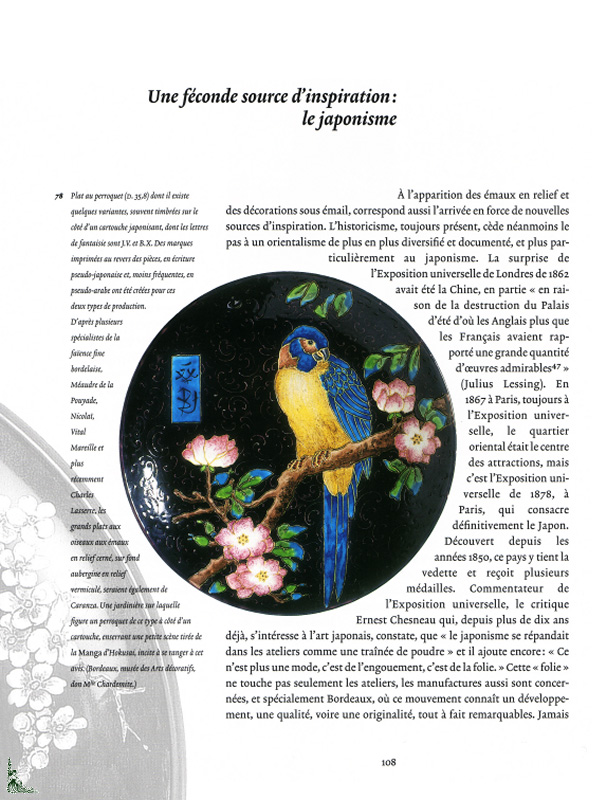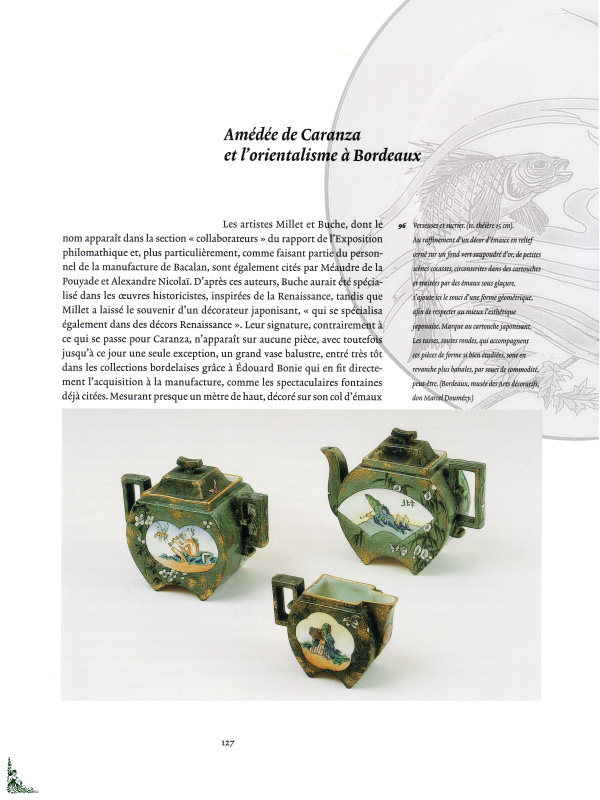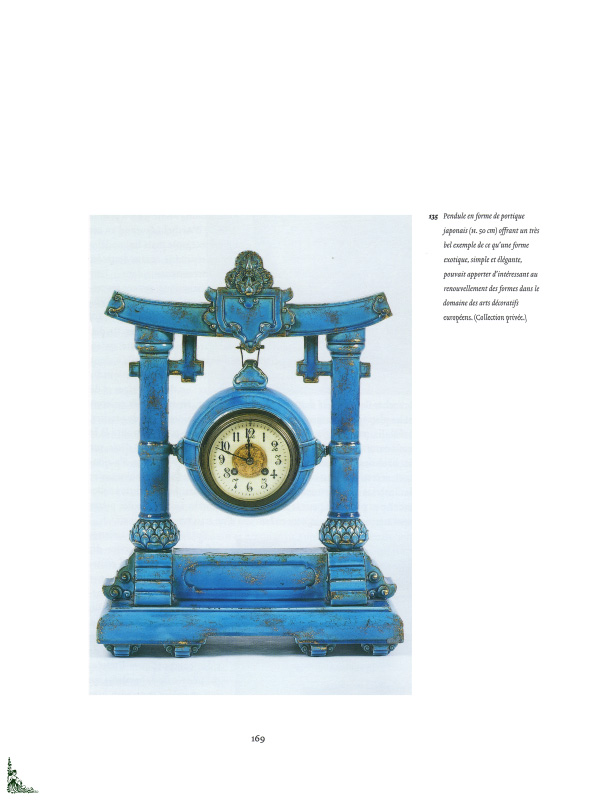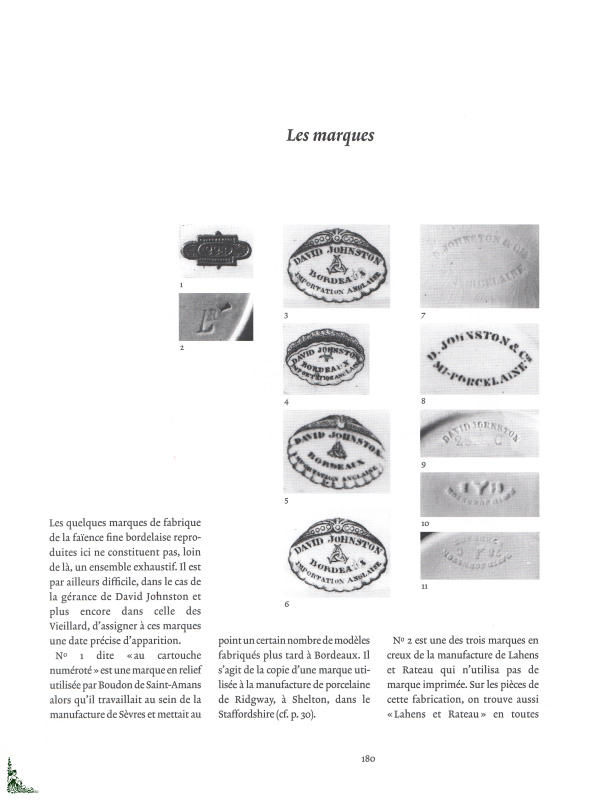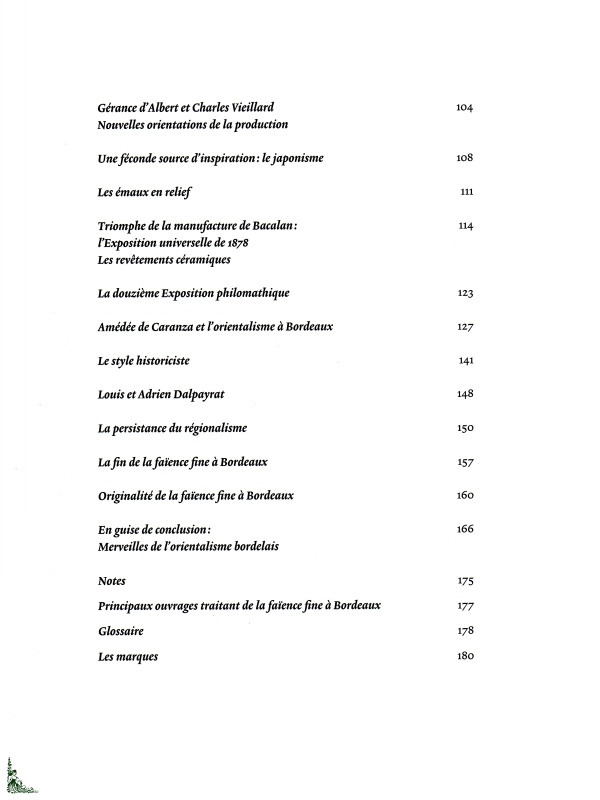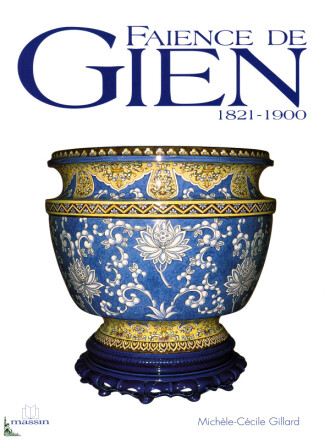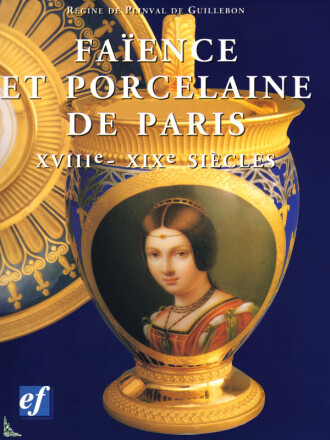J.VIEILLARD et Cie : Histoire de la faïence fine à Bordeaux
Détails de l'ouvrage
| Auteur : | Jacqueline du Pasquier |
| Éditeur : | Mollat (1998) |
| Reliure : | Broché (182 pages couleurs) 21 cm x 27 cm |
| Langue : | Français |
| ISBN : | 978-2-909351-73-5 |
| EAN : | 9782909351735 |
Description
J.VIEILLARD et Cie : Histoire de la faïence fine à Bordeaux de J. du Pasquier, Ed. Mollat, 21 cm x 27 cm, broché avec 182 pages couleurs
Ce livre de 182 pages avec plus de 200 illustrations couleurs retrace l'histoire des faïences et émaux à Bordeaux ainsi que la faïencerie J. Vieillard et Cie de Bordeaux de 1823 à 1895, de l'anglomanie au rêve orientaliste.
La faïence fine eut une durée relativement brève à Bordeaux (1829 - 1895) mais, particulièrement brillante, elle connut un développement hatmonieux et sans rupture à partir de la géniale intervention de Boudon de Saint-Amans, épris de la production céramique anglaise. La présence de Jules Vieillard succédant à David Johnston, maire de la ville et bourgeois éclairé, est déterminante dans le succès industriel de la manufacture de Bataclan mais aussi dans la qualité artistique d'une production qui fut unanimement célébrée au moment des Expositions universelles et développa dans sa dernière période un exceptionnel orientalisme dont on n'a pas fini de mesurer la richesse.
Cet ouvrage inclut les signatures et marques des faïences et émaux de Bordeaux.
Principaux chapitres de l'ouvrage :
- La faïence fine
- Pierre Honoré Boudon de Saint-Amans
- La manufacture de Lahens et Rateau
- La manufacture de David Johnston
- L'arrivée de Jules Vieillard
- Évolution de la manufacture
- Les émaux en relief
- Triomphe de la manufacture de Bacalan
- Amédée de Caranza et l'orientalisme à Bordeaux
- Louis et Alain Dalpayrat
- La fin de la faïence fine à Bordeaux
- Les marques et signatures
Les textes en Français sont de Jacqueline du Pasquier.
 English description
English description
J.VIEILLARD & Cie: History of the faience in Bordeaux
Details of the book
| Author: | Jacqueline du Pasquier |
| Publisher: | Mollat (1998) |
| Binding: | Softcover (182 full color pages) 8 inches x 10-½ inches ( 21 cm x 27 cm ) |
| Language(s): | French |
| ISBN : | 978-2-909351-73-5 |
| EAN : | 9782909351735 |
Editorial Reviews
J.VIEILLARD & Cie: History of the faience in Bordeaux, by J. du Pasquier, Ed. Mollat, 8 inches x 10-½ inches ( 21 cm x 27 cm ), softcover book with 182 full color pages
This softcover book of 182 full color pages, with 200 pictures recounts the history of the faience and earthenware in Bordeaux, the Jules Vieillard factory in Bordeaux, that produced faience as well as Longwy type enamels from 1823 to 1895.
Fine earthenware had a relatively short duration in Bordeaux (1829 - 1895) but, particularly brilliant, it knew a hatmonious development and without rupture starting from the brilliant intervention of Boudon de Saint-Amans, enamored of English ceramic production. The presence of Jules Vieillard succeeding David Johnston, mayor of the city and enlightened bourgeois, is decisive in the industrial success of the Bataclan factory but also in the artistic quality of a production which was unanimously celebrated at the time of the Universal Exhibitions and developed in its last period an exceptional Orientalism whose richness has not been finished.
This book includes the marks and signatures used by the Jules Vieillard factory.
Contents:
- Fine earthenware
- Pierre Honoré Boudon de Saint-Amans
- The manufacture of Lahens and Rateau
- The manufacture of David Johnston
- The arrival of Jules Vieillard
- Evolution of the manufacture
- Enamels in relief
- Triumph of the manufacture of Bacalan
- Amédée de Caranza and the Orientalism in Bordeaux
- Louis and Alain Dalpayrat
- The end of the fine earthenware in Bordeaux
- Marks and signatures
The French texts are written by Jacqueline du Pasquier.



